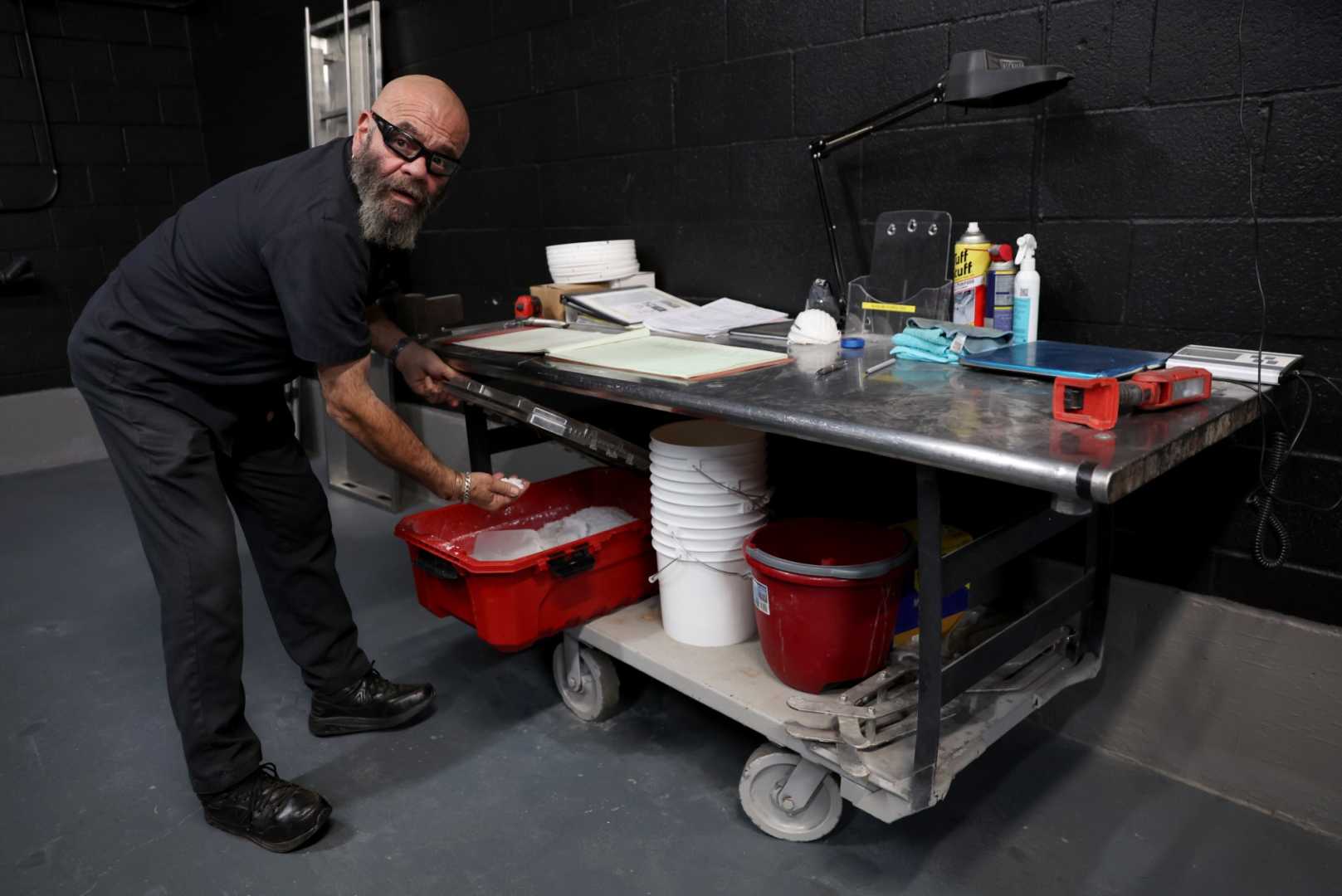Health
Bay Area Funeral Director Pioneers Eco-Friendly Aquamation Process

EMERYVILLE, Calif. — Francisco Rivero, a funeral director at Pacific Interment Service, is revolutionizing the funeral industry with an eco-friendly alternative to cremation. In December 2023, Rivero installed an aquamation system, becoming the first in the Bay Area to offer this service. The process, also known as alkaline hydrolysis, uses water to dissolve human remains, leaving behind only bones and teeth.
Rivero, who emigrated from Cuba in 1975, has been in the funeral business since 1992. He specializes in cremation, a practice that was not widely used at the time. However, he is now convinced that aquamation is the future of the industry. “It just flows the water back and forth over the person, back and forth,” Rivero explains. “You come in water, you’re leaving in water. It’s like an unbirthing.”
The concept of aquamation dates back to the 19th century when British farmer Amos Herbert Hobson patented a version of the process to turn animal carcasses into plant food. The modern system for human cadavers was first installed at the Mayo Clinic in 2005. In the aquamation process, the body is placed in a sealed chamber filled with a mixture of water and sodium hydroxide, heated to 303 degrees Fahrenheit, and circulated over the body for three hours. The result is a pristine skeleton and a yellowish liquid that is safe to empty into the sewer.
Rivero’s aquamation unit uses 90% less energy than cremation, according to Joe Wilson, founder and CEO of Bio-Response Solutions, the company that manufactured the machine. Beyond the environmental benefits, Rivero sees aquamation as inherently less violent than cremation. “I felt the pain of incinerating him,” Rivero recalls of cremating his own father nearly 20 years ago. “You know, it really struck deep at me.”
Rivero’s son, Lazaro, introduced him to the environmental benefits of aquamation a couple of years ago. “He was like, ‘Hey man, you know, we can make up for some of these 30,000 cremations,'” Rivero says. Lazaro, who will one day take over the family business, had trouble with the idea of cremating his father. “You have to open the machine every 30 minutes or so, to reposition people,” Lazaro explains. “And you’re just seeing people in various states of being burned away. It’s hard to picture your loved ones in there.”
Despite the benefits, aquamation is still little-known and polarizing. The Catholic Church advises against the method, saying it leaves nothing for bodily resurrection. However, aquamation yields more skeletal remains than cremation, which the church does permit. Rivero is betting that public opinion will shift in the coming years, much like it did for cremation. When Pacific Interment first opened, cremations accounted for just 19% of all body dispositions in the United States. By 2020, that number had risen to more than half.
Rivero’s enthusiasm for aquamation has already won over some clients. Jan Coulter and her husband decided to be aquamated after seeing the machine in July. Coulter’s 91-year-old aunt had just passed away, and her mother insisted on finding the greenest disposition method possible. “I just loved it when he said it’s like we come into this world in water,” Coulter says, echoing Rivero’s refrain. She has since begun enthusiastically telling friends about the process. “I just thought it was such a sane way to deal with someone’s body after they passed,” she says.












